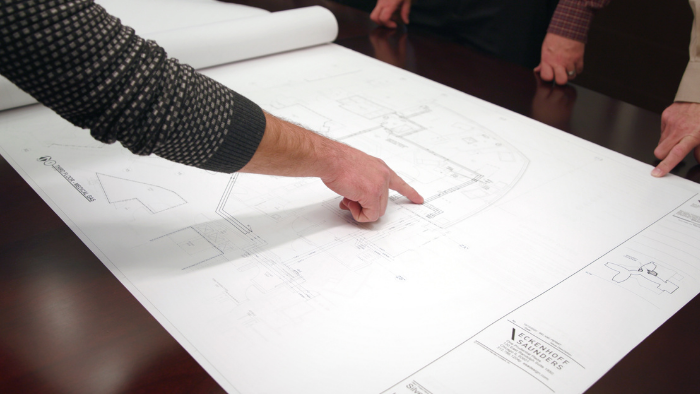Increasing your ENERGY STAR Rating Reduces Overspend on Utilities
Although any business can profit from an energy audit, hospitals stand to reap even greater cost savings due to the nature of their operations. To serve patients around the clock, hospitals have to run energy-intensive equipment continuously. Lighting, heating, air conditioning, ventilation, and temperature-sensitive medical equipment require a great deal of energy to consistently operate. According to ENERGY STAR, healthcare organizations spend $6.5 billion on energy every year.

If you’re part of that $6.5 billion, you should be using an energy audit to thoroughly understand how much energy your facilities use and identify where and how you can make improvements to reduce energy usage and lower costs.
Plus, an annual energy audit will not only identify optimization opportunities that can save hospitals money, it could also increase your ENERGY STAR ratings, help you hold down healthcare costs, and position you as a sustainable member of the community.
Here is a step-by-step guide on how to conduct a basic energy audit for your hospital or healthcare facility.
Step One: Assign Accountability and Responsibility
The first step is to put someone at the hospital in charge of managing the energy audit. Unless there is direct accountability, it’s easy to bypass an energy audit for higher priorities.
The audit manager should have clearly defined goals and be given sufficient resources in terms of time, staff, and money to successfully create and execute an energy auditing process – a process that will include a complete assessment of your facility’s energy use. A hospital may choose to outsource this effort to a third-party organization or may simply leverage a cross-functional internal team to determine what changes need to be made.
If you choose an internal approach, it can be useful to take advantage of a tool such as the Energy Star ENERGY STAR Portfolio Manager, a free tool offered by the Environmental Protection Agency (EPA). There, hospitals can track their energy usage and compare their energy use intensity (EUI) results against national averages, which are normalized for organization size, local climate, and operation type.
Step Two: Define Scope and Conduct Initial Inspection
Next, define the scope of your energy audit based on factors like the size of your hospital and the resources available. Your audit may be limited to a defined physical space, meaning you opt to conduct a multi-faceted energy audit for a single building instead of an entire complex. The scope may also be limited by the type of energy used; for example, an initial energy audit may evaluate all hospital lighting or only the HVAC system.

After you’ve determined the scope of your audit, you’ll conduct an initial inspection. An individual site inspection should include elements specific to the scope of your audit. For example, if you’re conducting a complete audit of a single building, an inspector will physically check things like doors, windows, HVAC system, insulation, air leaks, and lighting. A lighting-only energy audit may require you to create an inventory of all lighting systems within the entire facility (information that may be available without a physical inspection).
In every case, you’ll want to complement your physical inspection with an in-depth evaluation of the hospital’s utility spending over the last two years, taking into account changes in energy prices and any capital improvements that may have impacted utility bills.
Step Three: Identify and Prioritize Energy-Saving Opportunities
It’s likely your hospital will uncover many opportunities to save energy and reduce utility costs. Since savings opportunities may vary from facility to facility, it’s important to identify and prioritize the areas where your organization can quickly begin generating a satisfactory return on improvements.
For example, an older hospital may benefit from installing or retrofitting components of its HVAC system. According to the U.S. Department of Energy, savings could be captured by:
- Switching to a variable air volume system in office or storage areas can reduce ventilation fans’ energy by 50%.
- Upgrading to energy-efficient motors can result in a two to nine percent efficiency gain.
- Reducing HVAC usage in unoccupied or low-use areas by employing energy-efficient scheduling like setbacks, weekend settings, or temperature resets based on outdoor climate.
Lighting retrofits are another common area where hospitals can save significant money. Studies by the U.S. Department of Energy found the average energy savings with these common energy upgrades:
- Installing LED lighting in exit signs can significantly reduce energy usage. For example, in a 600-bed hospital with 300 exit signs, using 5-watt LED signs instead of 36-watt lighting results in an annual savings of more than $14,000. This hospital recoups its investment in just over one year.
- Replacing older T12 or T8 technologies with Super T8 lamps and high-efficiency electronic ballasts can reduce energy usage by 20 to 30 percent.
- Implementing daylighting in new construction, combined with efficient lighting can reduce energy usage from 2.2 watts per square foot to 0.88 watts without reducing light levels.
Yet another way to reduce wasted energy is to repair air leaks. Hospitals may save up to 20% per year by identifying and repairing gaps along flooring, around doors and windows and by addressing other draft conditions. A professional can help identify areas where the largest air leaks are occurring.
Step Four: Measure and Continuously Improve
Once an energy audit is completed and areas of improvement have been identified, it’s important to measure energy usage and savings at regular intervals. If the results are as expected or better, hospitals can leverage the data to help justify and perhaps fund the next energy efficiency initiative.
Energy-efficient technologies and developments including smart systems, sensors, and the Internet of Things (IoT), promise to deliver even greater opportunities for additional savings. Continuous improvement supported by regular energy audits can help a hospital or healthcare facility take advantage of these technologies to drive down overall healthcare costs and reduce its carbon footprint.


